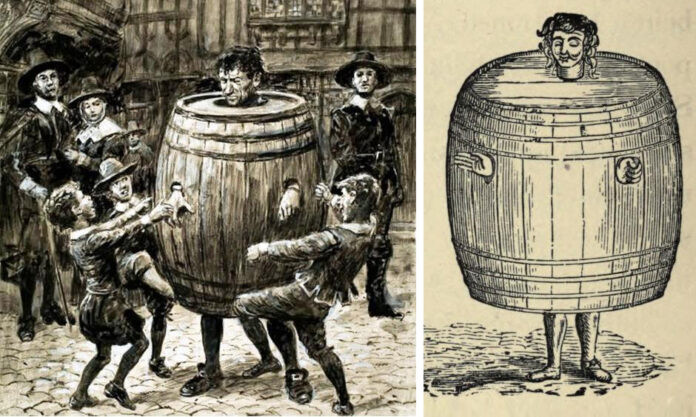The Peculiar Punishment That Sobered Up a Nation
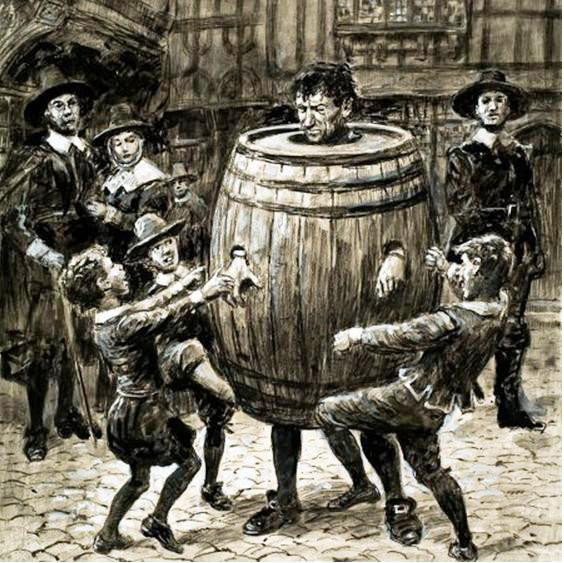
In the cobblestone streets of early modern Europe, a strange sight would occasionally catch the eye of passersby: a person stumbling along, encased in a large wooden barrel with only their head and arms protruding. This wasn’t some bizarre fashion statement or drunken prank gone wrong. It was, in fact, a form of punishment known as the drunkard’s cloak.
A Barrel of Shame
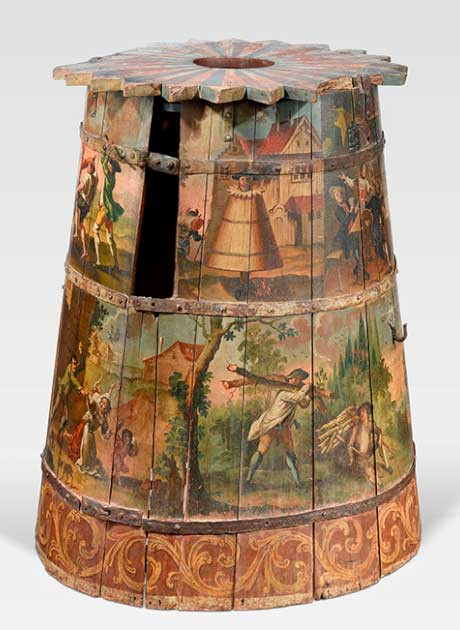
The drunkard’s cloak was exactly what it sounds like – an empty beer barrel modified to fit over a person like an oversized, wooden straightjacket. Authorities would force repeat offenders of public drunkenness to wear this humiliating contraption and parade through town, serving as a living cautionary tale to others who might be tempted to overindulge.
From England to the Continent
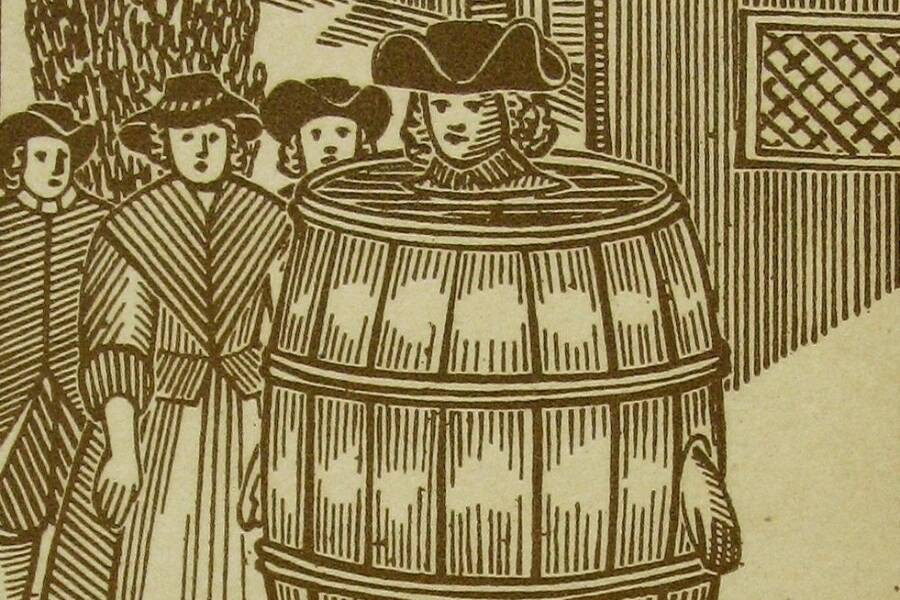
While often associated with medieval England, particularly after the Ale Houses Act of 1551, the drunkard’s cloak found its way across Europe. Known as the “Schandmantel” in Germany and the “Spanish mantle” in Denmark, this peculiar punishment crossed borders and cultures. Even in the Netherlands, it wasn’t just for drunkards – adulterous women in Delft faced the same wooden embrace in the 1640s.
A Newcastle Specialty?
Interestingly, despite its notoriety, concrete evidence of the drunkard’s cloak’s use in England is surprisingly scarce. Historian Dan Jackson points to a single archival mention from 1650s Newcastle upon Tyne, suggesting that this punishment may have been more legend than widespread practice in England.
The Hangover of History: Shame-Based Punishments and Their Legacy
A Sobering Reflection
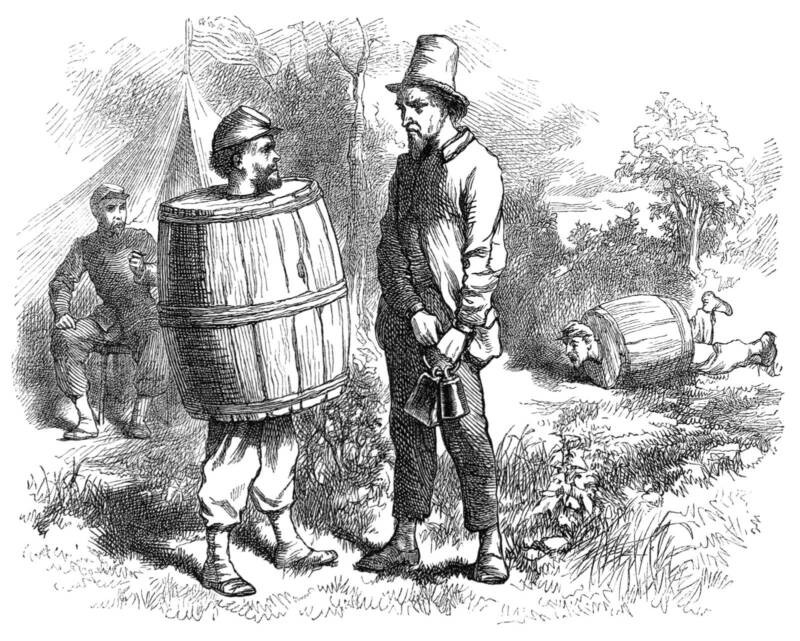
The drunkard’s cloak serves as a stark reminder of how societies have long used public humiliation to address perceived moral failings. Even today, echoes of this shame-based approach persist in some addiction treatment methods.
Learning from the Past
However, modern research has shown that shame often fuels the very behaviors it aims to stop. As we look back on the drunkard’s cloak, we’re reminded of the importance of addressing complex social issues with compassion and evidence-based solutions, rather than public spectacle.
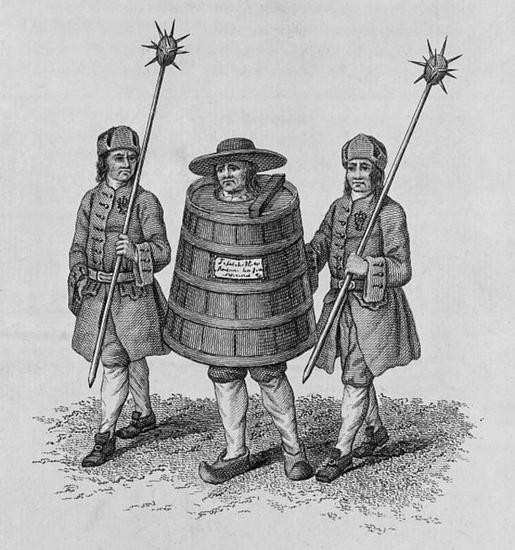
In the end, the tale of the drunkard’s cloak isn’t just a quirky historical anecdote. It’s a sobering reminder of how far we’ve come in understanding addiction and social behavior – and how far we still have to go in treating these issues with the nuance and empathy they deserve.
